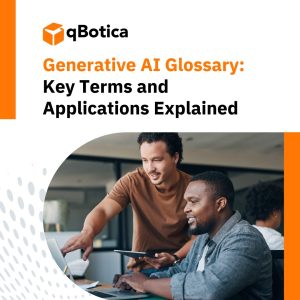Artificial intelligence is gradually expanding its frontiers from private platforms into public sector services, and municipal and national governments are at the forefront of the recent push. However, adopting AI for the government is not as straightforward as it is with the private sector due to the bureaucratic processes involved.
In creating a roadmap for adopting artificial intelligence, there are several challenges that policymakers should know and prepare for. These challenges and their solutions are discussed in this article in detail.
The Use of Data
Artificial intelligence thrives on data without which it cannot function. Many will argue that data is a major component of AI and machine learning. Each day, humans leave a trail of data, and over time, they form patterns that can be studied for decision-making. When adopting AI in the public sector, decision-makers must know how to use and store data.
The sheer volume of data left behind by human activities is humongous and contains vital information patterns worth saving and studying. The Government must create the necessary infrastructure to effectively manage and interpret this data.
The volume of generated data is one thing; how the data is collected and interpreted is another challenge. And as we all know, data fuels modern AI solutions. Feed the technology with faulty data and get faulty or mixed results.
Solution: The solution is to have governance standards for collecting and storing data. Every ministry or government agency must have a department in charge of data collection and storage, which a data officer must head. Integrity standards must be established; otherwise, such agencies or ministries cannot take advantage of AI effectively
The Environment
Another challenge the government will have to grapple with if AI is adopted is the complex nature of the environment, which is ever-evolving. While the public is used to AI in the private sector and AI-powered services, they have no such experiences with the public sector. For instance, the data cloud technology space is currently dominated by service providers like Microsoft, Amazon, Alibaba, and Google. These companies make up more than 84% of the global cloud market.
Users know this, so they visit these brands to fulfill their needs. This is the benefit of experience the public sector doesn’t currently have. Secondly, the cloud service sector is capital-intensive and already dominated by private brands.
While these firms may offer cost-effective solutions, building an entirely new cloud infrastructure from the ground up is not an easy feat. Furthermore, the diversity of the AI landscape and bequeathing sensitive information into data banks run by private entities is not without risks.
Solution: For public corporations that interact with the public daily, some aspects of their activities can be automated using in-house technology. In contrast, the less important aspects may be outsourced to private companies to reduce costs. Another solution is to hire talent currently operating in the private sector to tap their experience for the public good. Involving new players in the public sector ecosystem through legislation and creating AI hubs and clusters is the way to go. A combination of talents, legislation, and private–public partnerships can help the government automate its activities.
Prevailing Culture
Any government that adopts AI partially or completely must prepare for difficulties further down the road because AI is relatively new in the public space. As is the case in many private companies as well, introducing a new technology has its fair share of challenges. While private companies are quite flexible with their structure, provide, and culture, which encourages innovation, the public sector is the opposite, as it is known for its rigid rules and processes.
Without creating a road map for a seamless transition from current processes into automation, the success of an AI-powered public sector may only be moderately achieved. Civil servants, by the nature of their profession, are not encouraged to take risks like private employees, further impeding the adoption of AI technology.
Solution: The Government should first prepare and excuse an orientation program for civil servants, especially those who will be affected by AI or will interact or work with the technology. Civil servants should also take crash or intensive courses to handle AI tools better. They should also be encouraged to transition from current procedures into new ones. Furthermore, experts should be hired to study potential flashpoints and develop solutions before they occur. A compensation package should also be instituted to encourage public servants to embrace the new technology.
Procurement Standards
The procurement mechanism of the government is set in stone with traditional approaches that have existed for decades. Turning to AI to make decisions about public procurement poses a threat to long-established conventions. The government may want to rely on external algorithms which they do not control and which are subject to manipulation by external entities. Inflated contracts and manipulation of the contractor vetting process are just two potential risks of using off-the-shelf algorithms. Also, when the government requests for software customization to suit its aim, developers who own the software may object.
Solution: The expensive solution is for the government to develop in-house software so they can access the algorithm and manipulate it when necessary. The other option is to set contractual obligations with a developer under stringent arrangements where they can use their proprietary software for public procurement. This will enable government actors to feed the software with new data to keep the system running.
Management Skills
The last challenge we wish to address regarding adopting AI in the public sector is management skills. The government may have the financial resources to build its own customized artificial intelligence infrastructure, but it may not have the skills to keep the system running. This is because AI management talent is in short supply today as it is a relatively new phenomenon. Finding skilled managers represents a challenge for both the public and private sectors, and most existing talent is engaged in the private sector on attractive remuneration packages. There can’t be a successful implementation of AI without planning for management teams.
Solutions: Decision makers must be aware of the skill requirement for running a successful AI infrastructure and seek out such talent by hiring them from the labor market, or funding training programs to train talents. Raising compensation packages and offering attractive retirement schemes is another way to attract top talent.
Conclusion
The roadmap to successfully adopting AI in the government sector has to be holistic. Potential threats like the prevailing culture, current environment, how data is collected, stored, and used, and the availability of talent have to be considered. Without proper planning and a cohesive strategy, this transition may be counterproductive. Hiring experts like Qbotica to aid in deploying and implementing record-setting strategies and even setting up the required infrastructure is the way to go. Contact Qbotica today if you have any questions, and we will get back to you as swiftly as possible.




